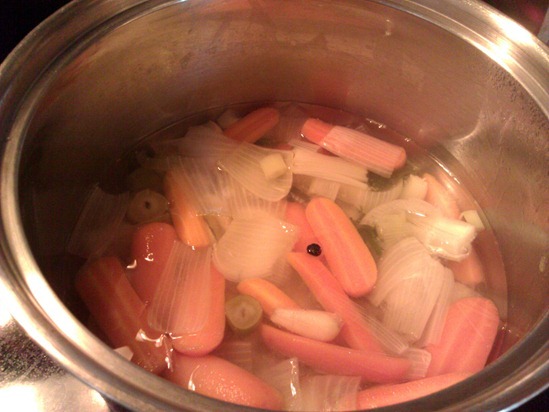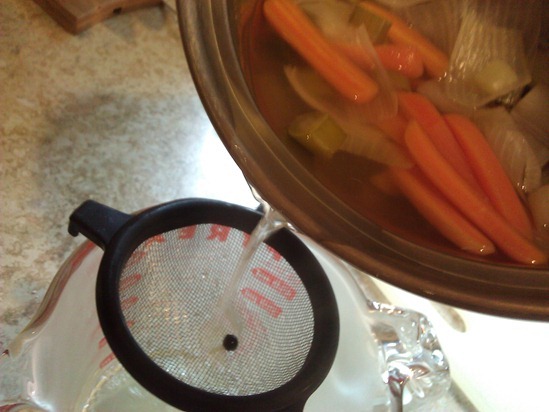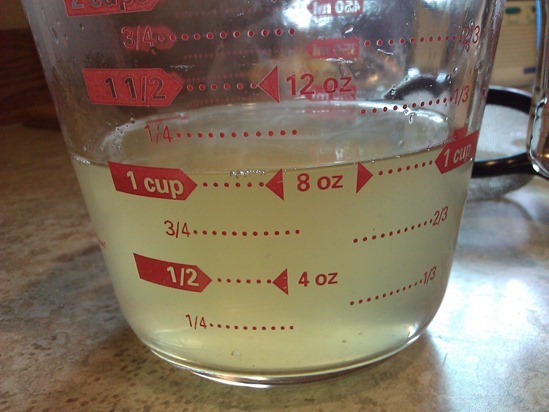Nutrient density of vegetables in your garden
10.9 years ago broccoli, leaves, lettuce, nutrients, parsley, pumpkin, Uncategorized

Just out of curiosity I got my hands on the USDA food database and had a little fun in Excel and the results were pretty interesting. Assuming I wanted to figure out what vegetables I could grow in my garden had the highest nutrient density. I wrote a formula for each nutrient from Vitamin A to Zinc what percentage rank across all of the foods did the item have. I then summed up these percentages based on 100 calories consumed to create an overall score and grouped by average across the categories as a “Nutrient Density Score.”
The results were pretty interesting and discovered some new plants I should try consuming this year.
Top 10 most nutrient dense vegetables
| Rank | Vegetable | Score | Nutrients with significant content |
| 1 | Pumpkin leaves | 24.0 | Potassium, Phosphorus, Magnesium, Leucine, Tyrosine, Threroline, Isoleucine, Phenylalanie |
| 2 | Spinach | 23.4 | Calcium, Potassium, Phosphorus, Zinc, Folate, Magnesium, Beta carotene, Tyrosine, Threroline, Isoleucine |
| 3 | Mustard Greens | 23.0 | Calcium, Potassium, Phosphorus, Vitamin C, Vitamin A, Folate, Beta carotene, Tyrosine, Arginine |
| 4 | Broccoli | 23.0 | Calcium, Phosphorus, Zinc, Pantothenic acid, Folate, Aspartic acid, Glutamic acid, Valine |
| 5 | Asparagus | 22.6 | Phosphorus, Potassium, Zinc, Copper, Selenium, Niacin, Folate, Aspartic acid, Glutamic acid |
| 6 | Turnip Greens | 22.6 | Calcium, Potassium, Beta carotene, Tyrosine, Threroline, Isoleucine, Phenylalanie, Leucine, Valine |
| 7 | Pak-Choi | 22.3 | Calcium, Phosphorus, Potassium, Vitamin C, Folate, Beta carotene, Glutamic acid, Isoleucine, Alanine |
| 8 | Swiss Chard | 21.5 | Magnesium, Phosphorus, Potassium, Copper, Beta carotene, Isoleucine, Phenylalanie |
| 9 | Green Leaf Lettuce | 21.5 | Phosphorus, Potassium, Manganese, Vitamin A, Beta carotene, Isoleucine |
| 10 | Beet Greens | 21.4 | Calcium, Phosphorus, Potassium, Zinc, Copper, Manganese, Pantothenic acid, Beta carotene |
As you can see everything in the top ten is at least the color green with most of the plants being leafy vegetables. Some honorable mentions rounding up the top 20: Chives, Kale, Zucchini, Corn salad, Okra, Cauliflower Greens, Parsley, Mushrooms, Collards, Red leaf Lettuce.
So as you know vegetables contain the most nutrients the shorter the time between they are harvested and then consumed so anywhere you can shave off a few hours of this process is to your advantage, so to benefit the most for the nutrients in your food some of the above plants are some great options.
So how about the bottom, or the top ten least nutrient dense vegetables in your garden?
Bottom 10 least nutrient dense vegetables
| Rank | Vegetable | Score |
| 1 | Indian Squash | 8.4 |
| 2 | Shiitake Mushrooms | 9.4 |
| 3 | Potatoes | 9.5 |
| 4 | Jerusalem Artichoke | 9.6 |
| 5 | Parsnips | 9.7 |
| 6 | Lemon grass | 9.7 |
| 7 | Pumpkin flowers | 10.3 |
| 8 | Arrowroot | 10.8 |
| 9 | Tomatillos | 10.9 |
| 10 | Rhubarb | 10.9 |
Now don’t get me wrong many of the plants in the above list may still have plenty of nutritional value it is just that compared to the competition they lack the shear concentration of nutrition and the diversity across the spectrum.
I know for me I am planning on trying some pumpkin leaves this year. Sounds like you just dice them up and sauté with some oil and throw in some garlic at the end and sounds like the leaves should actually be pretty sweet tasting…I will be sure to post of the success or failure of cooking pumpkin leaves.
How to make vegetable stock
12.7 years ago carrot, leeks, onions, parsley, stock, vegetables
Vegetable stock is a great way to infuse some great flavors and nutrients to your food. There are the obvious additions such as soups, but I also like to add to staples such as rice and mashed potatoes and even my most fussy vegetable eaters do not even notice.
I didn’t have a lot of spare vegetables so I made a small batch just for the rice I was making for dinner. You can use pretty much any spare root vegetables you have in your garden or refrigerator. For non-root varieties celery, tomatoes (especially good if making minestrone soup), corn, and other fresh herbs can also be good additions…general rule if you find it in soup good chance it can help your vegetable stock’s flavor. For be this included some bunching onions, leek, and some baby carrots from the garden.
Homemade vegetable stock recipe
- 3 bunching onions (white and light green areas) chopped in 2 pieces
- 5 baby carrots sliced in half
- 1 leek cut in half
- 1 sprig of parsley
- 1/2 bay leaf
- 4 peppercorns
- 2.5 cups cold water
Directions: Cook at low heat for at least 30 minutes (I normally go up to an hour). This should add a great aroma around your house with kids asking where the chicken noodle soup is. Now simply strain the stock into a container (I normally use a large spoon when pouring into my strainer but was difficult to hold a pan, spoon, and a camera at the same time) I then take the remaining vegetables and add to my compost bin…you could also have a few carrots as a snack but not going to be much flavor nor nutrients left…guess it pretty much is fiber supplement at this point.
Once you have strained your now rendered vegetable stock you can use immediately or refrigerate in a sealed container for about a week or freeze for up to 6 months.
WARNING: Once you try you homemade version of vegetable stock you probably will not be able to go back to the canned version again.





